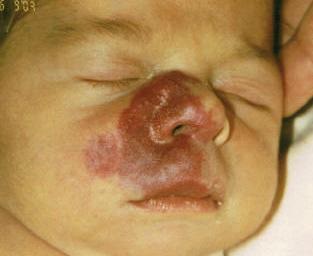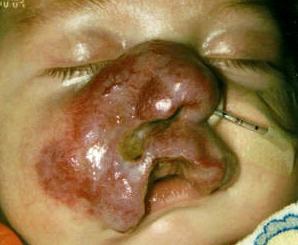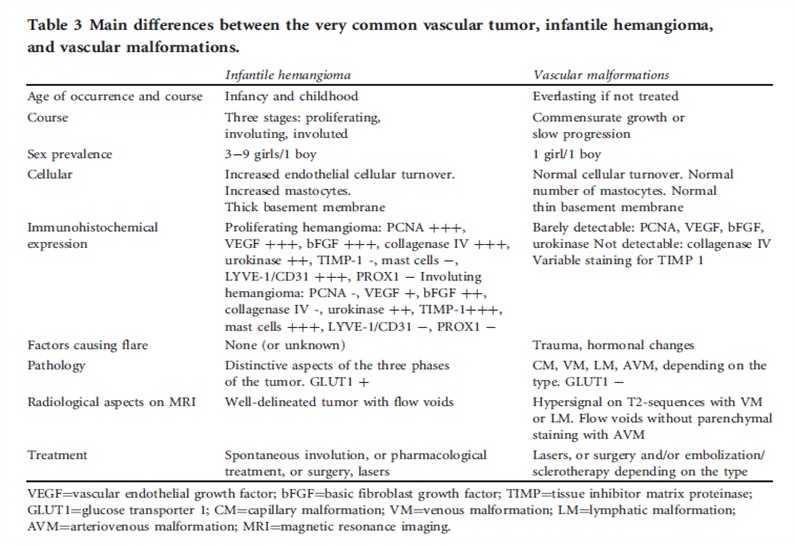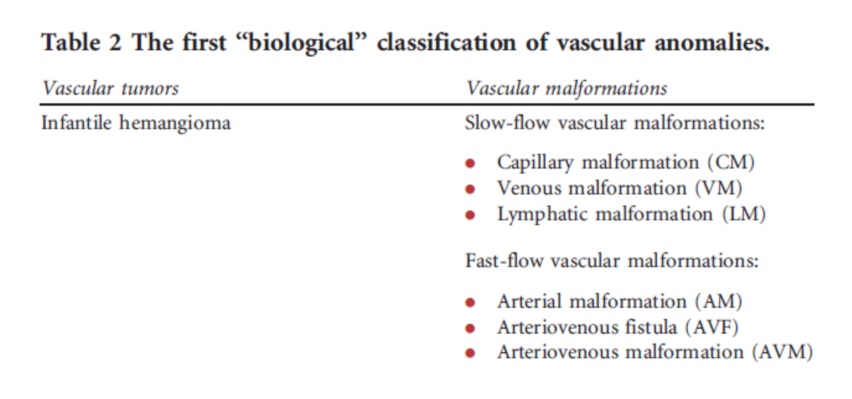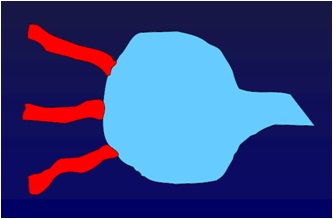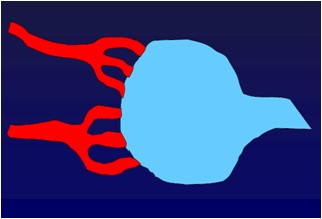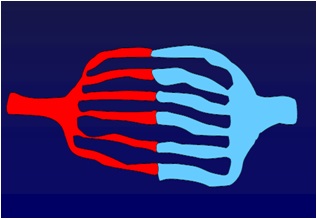血管畸形分类的历史
Mulliken和Glowackit于1982年提出脉管性疾病(vascular anomalies)分为血管瘤(hemangioma)和脉管畸形(vascular malformations),这一观点已被国内外学者广泛接受.血管瘤和血管畸形是两种性质完全不同的病变,有着完全不同的临床表现、病程和转归. 血管瘤和血管畸形不是一个病[1] 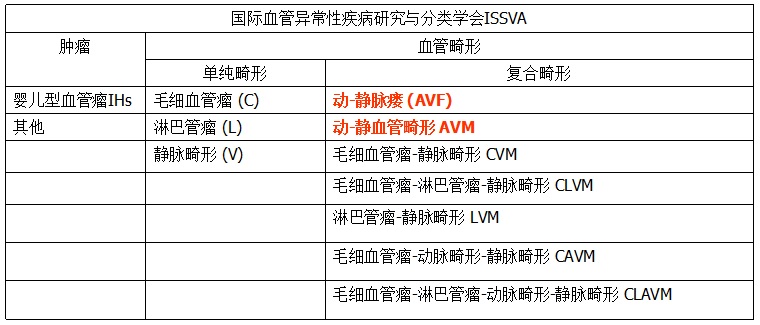
本分类基于1996年在意大利罗马召开的第11届国际血管异常性疾病研究与分类学会(ISSVA)
血管瘤是肿瘤,可以增殖生长
疾病分类的目的是评估预后和指导治疗,对于从事血管内治疗的医生来说将血管畸形分为“快”血管畸形和“慢”血管畸形最实用。
毛细血管畸形(Capillary malformations)
- 皮肤表面纤细的血管(Tiny vessels in skin surface)
- 随体温或心输出改变颜色Change colour with body temperature or cardiac output
- 可以鼓励性发现或与潜在的疾病相关
- 激光治疗
静脉畸形(Venous malformations) - 袋状静脉的集合(Collection of baggy veins)
- 不规则内皮细胞排列的血管通道 (Irregular endothelial-lined vascular channels)
- 腔壁缺乏平滑肌细胞 (Lumen walls deficient in smooth muscle cells)
- 腔内充盈慢性血流 (Filled with slow flowing blood)

淋巴畸形(Lymphatic malformations)
- 管道、囊性和空间的集合(Collection of spaces, cysts or channels)
- 不同疾病,在淋巴系统的正常发育的天生的障碍(Diverse group of disorders, inborn error in normal development of the lymphatic system)
- 由扁平内皮细胞排列成的薄壁管道(Thin walled channels lined by flattened endothelium)
- 其内充满淋巴或浆液(Filled with lymphatic or serous fluid)

动静脉畸形(Arteriovenous malformations)
- 动脉和静脉之间的异常连接(Abnormal connection between artery and vein)
- 血流在其内高速流动 (Very high flow shunting of blood)
- 解剖类型(Anatomical types)
- 动脉-静脉型(Arteriovenous)
- 小动脉-静脉型(Arteriolo-venous)
- 小动脉-小静脉型(Arteriolo-venulous)
A french (Houdart) classification modified by Cho et al. J Endovasc Ther 2006
1. Introduction: ISSVA Classification | ||||||||||||||||||||||||||||||||


